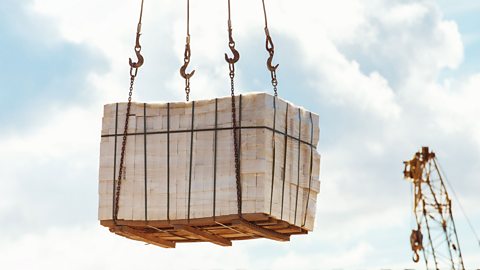Key points
Water pressureA measure of how concentrated (or spread out) a force is. Pressure is measured in pascals (Pa). at a particular point comes from the weight of water above it.
Pressure in liquidOne of the three states of matter. Liquids, like water or oil, do not have a fixed shape and can flow. increases with depth, so the deeper you go the greater the pressure.
Pressure exists on surfaces, in air and in liquids.
It is calculated by force Ă· area.
How does water pressure increase with depth?
This short demonstration will show that water pressure increases with depth
Have a go

Image caption, Click to see a step-by-step slideshow.
Image caption, WHAT YOU NEED - An empty plastic bottle, some sticky tape, a pin, a pencil and a jug of water.
Image caption, STEP 1 - Make three holes about the same distance apart using a pin and then widen with a pencil.
Image caption, STEP 2 - Cover the holes with sticky tape.
Image caption, STEP 3 - Fill the bottle with water. Make sure the water is above the 3 holes.
Image caption, STEP 4 - Remove the tape and watch how the water exits each of the holes.
Image caption, And there you have it! Pressure really does exist in water.
1 of 7
How does water pressure work?
The demonstration shows that the water pressure at each hole, depends on the volumeThe amount of space an object occupies, usually measured in mÂł or cmÂł. of water above it. The bottom hole has a greater amount of water above it, meaning there is greater pressure there.
As the water comes out of the holes, the water level falls, meaning the jets of water from all of the holes slow down.
Air pressure works in a similar way. The air pressure where you are, is determined by the weight of the atmosphere above you.
If you climb a tall mountain, the air pressure decreases because there is less air above you.
Who needs to know about water pressure?
Divers need to be aware of pressure in water. If you dive to the bottom of a swimming pool, your ears may start to hurt. This is due to the extra pressure around you.
Deep sea divers train themselves to go many times deeper and need to know how to cope with this extra pressure.
Submarines can go very deep. They must be designed carefully to handle the enormous water pressure at those depths.
At the bottom of the ocean the pressure is equivalent to an elephant standing on your finger, so submarines have to be very strong indeed!
Test your knowledge
Play the Atomic Labs game! gamePlay the Atomic Labs game!
Try out practical experiments in this KS3 science game.

More on Forces and movement
Find out more by working through a topic
- count1 of 16

- count2 of 16

- count3 of 16

- count4 of 16
